![]()
Reticle (IBSD) - Ion beam sputter deposition system from Angstrom Engineering Inc. (Канада).
The ion beam sputter deposition system creates precise optical films of the highest purity, density, and stability. Angstrom Engineering’s Reticle system provides a turn-key solution for those looking to realize any optical design into a high-performance film.
Process:
IBSD (Ion beam sputter deposition)
Angstrom has engineered a platform that provides the optics community the ability to create films with excellent purity, density, and uniformity, all in a highly repeatable and automated fashion. This is an ideal system for applications such as antireflective (AR) coatings, highly reflective (HR) coatings, coatings for laser diode bars, telecom optical filters, as well as vanadium oxide deposition.
Reticle employs this process, in which a focused beam of highly energetic ions is accelerated toward a target comprising the material to be deposited. Thoughtful design of the ion beam focusing optics confine the beam entirely to the area of the target, eliminating any risk of contamination. The IBSD process creates a highly energetic flux of deposition material, leading to films with improved density, hardness, and surface roughness compared to those deposited by evaporation processes. Contrary to conventional magnetron sputtering, IBSD takes place in a high vacuum environment, minimizing noble gas inclusion in the deposited film and improving the environmental stability of the coating. IBSD processes can also employ a secondary ion source for substrate cleaning and energetic assist, substrate heating for reactive deposition, and in-situ optical monitoring or ellipsometry for critical layer thickness termination. For precise and complex optical coatings, choose ion beam sputter deposition systems from Angstrom Engineering.
Which Reticle Do I Need?
The substrate area to be coated, system throughput requirement, and target carousel configuration are the determining factors in selecting which of the standard Reticle platforms will best suit your process. Whether you’re coating 100 micron wide laser diode bars or 300 mm diameter wafers, there is a Reticle platform that will make it happen.
Deposition Ion Source
Reticle employs a selection of gridded RF-ICP ion sources for high energy deposition. Available sources include 4, 10, 14, and 22 cm grid configurations with ion energies up to 1200 eV and beam currents greater than 1000 mA. Self-aligned ion optics are configured specifically for the desired deposition requirements and geometry of your process. A choice of low frequency, radio frequency, or hollow cathode style neutralizer ensure stable beam operation without contamination from a traditional filament. Operation of the RF-ICP source is handled by Aeres, combining the power of full process flexibility with the ease of one-touch, automated recipe control.

Secondary Ion Source
All standard Reticle platforms include an additional gridless end-Hall ion source with hollow cathode neutralizer. The end-Hall source is optimized for substrate cleaning/etching, ion assisted deposition, or reactive IBSD processes. For processes that require deep substrate etching, a selection of gridded DC or RF-ICP ion sources are also available.
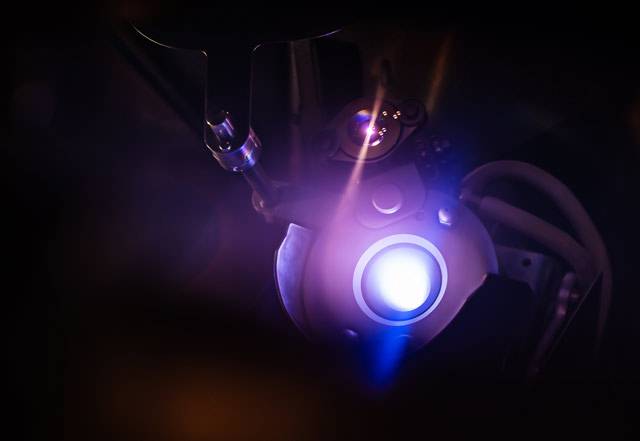
Target Carousel
The deposition ion source is directed toward a material target which has been optimized in both size and position for the required deposition geometry. Targets are water cooled for improved process stability, and continuously rotate to prevent beam texturing. For multi-layer depositions, the carousel can be automatically indexed between targets, with up to 8 positions available. Target rotation and carousel indexing each have torque-sense, preventing any process problems due to slips or jams in rotation.
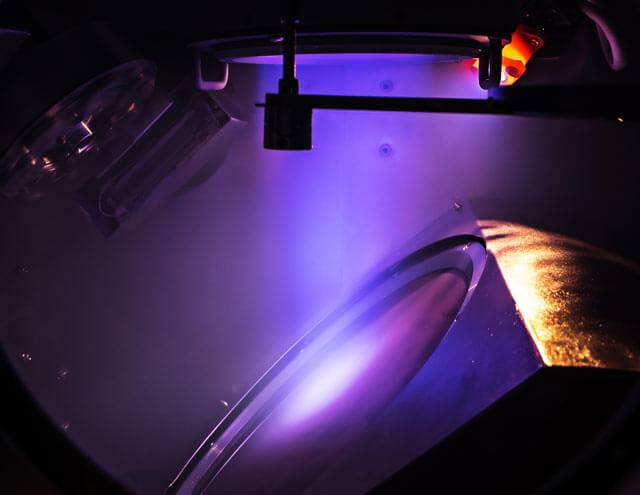
Vacuum Environment
Reticle can be configured for both high and ultra-high vacuum environments. High speed, magnetically levitated turbomolecular pumps serve as the primary high vacuum pump. An optional cryogenic pump improves base pressure, pumping speed, and can be isolated from the chamber during reactive processes with oxygen. Low-profile chamber bake out heaters remove moisture from the chamber walls and shielding, improving base pressure and overall process stability.

Variable Angle Sweep
Along with sample rotation, the variable angle stage that is utilized for Reticle provides for in-built angular motion through the deposition flux. Sweeping the tilt angle can improve film thickness uniformity and sidewall coverage, while also avoiding high energy reflected neutral species for critical processes. Each axis of motion is controlled through Aeres using precision servo motors, providing better than 0.1 degrees of positional accuracy. Front side infrared heating bulbs tilt with the stage to provide a consistent temperature profile for reactive processes.
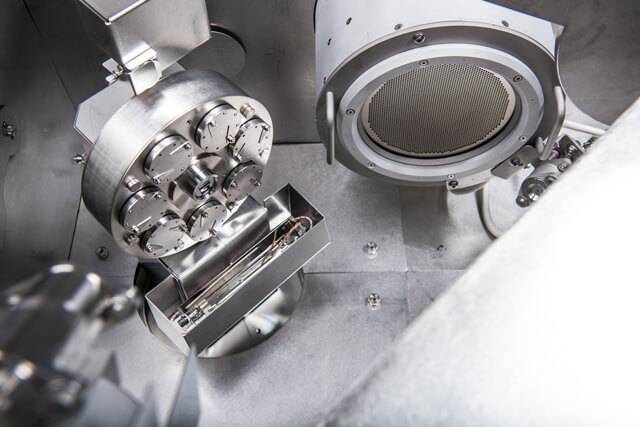
Planetary Motion
Planetary rotation integrates a third axis of motion to the variable angle stage. The size, position, and gear ratio of each planet are optimized to provide Reticle’s best possible film thickness uniformity.

Uniformity Shaping
Dynamic uniformity shaping is achieved using a flux correction shield between the deposition source and the substrate. The shape of each correction shield can be modeled and empirically optimized for any process. Each correction shield can be tilted in-situ to find the perfect balance between film uniformity and deposition rate.
Load Lock
With the Ion beam sputter deposition system, a secondary vacuum chamber can be annexed, allowing for a significant improvement in throughput. Keeping the main chamber pumped down lowers the chance of contamination and eliminates the need for vent and pump down cycles for sample changes. While keeping the main chamber at its base pressure, you can load multiple samples into the load lock chamber, enter all recipes in Aeres, and let the system take care of transferring samples into the main chamber for processing.
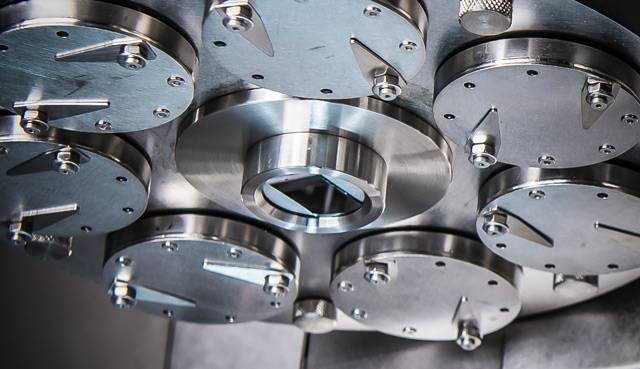
Apex Optical Monitor
In-situ optical monitoring is available through Angstrom’s Apex optical monitoring package. Our unique design allows for direct or indirect monitoring of the variable angle stage, eliminating the need for tooling factors or a witness glass changer. Learn more about Apex here.
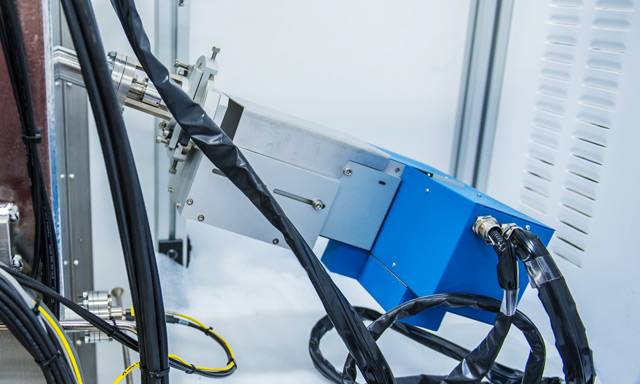
In-Situ Ellipsometry
In-situ ellipsometry provides critical information on the performance of an optical film while it is being deposited. Layer termination from ellipsometric data is fully integrated to Aeres. A variety of multi-wavelength and spectroscopic ellipsometry solutions are available with the ion beam sputter deposition system.

Quartz Crystal Microbalance (QCM)
A shuttered QCM located near the substrate provides feedback on the deposition rate and physical thickness of the growing film. Commonly, a QCM is used to calibrate an initial deposition rate before completing the layer thickness under time control with a fixed beam current. Shuttering the crystal will drastically extend its operating lifetime during long processes or on systems with a load lock.